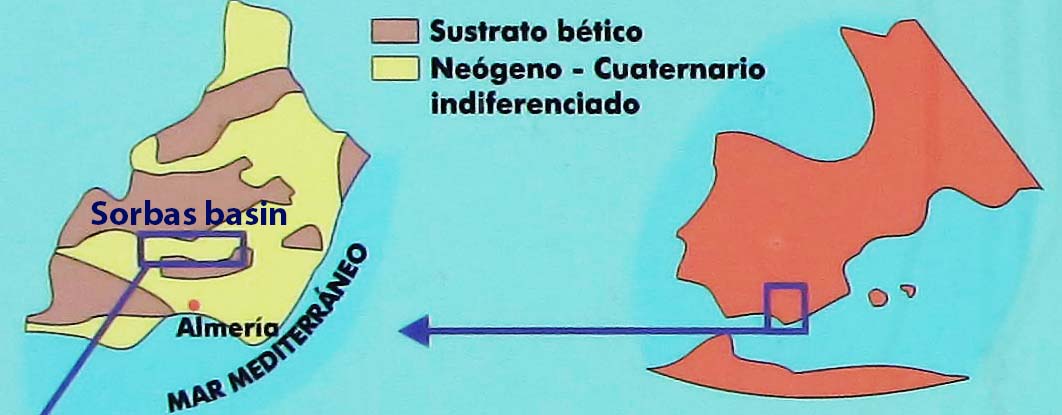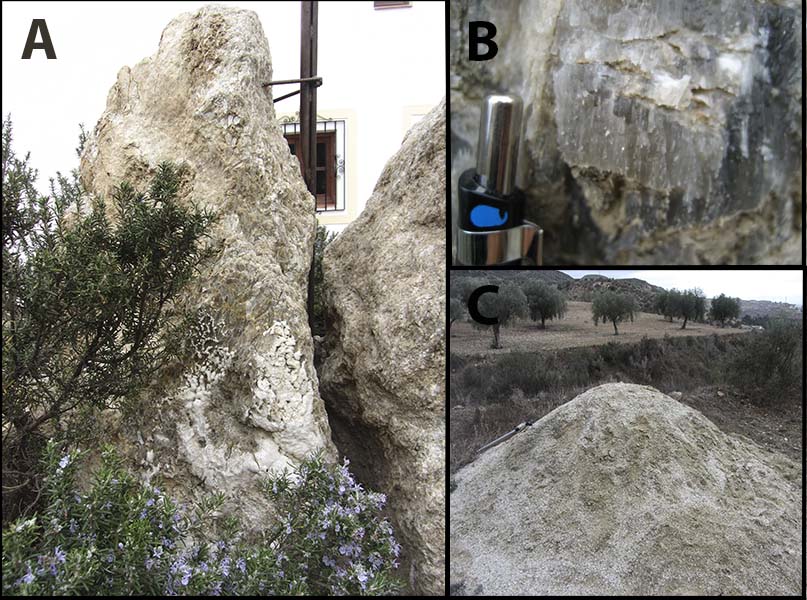Environmental Geology in Spain - Gypsum caves
24.02.2016
Newsfeed of the day
by Andrea Mazon
Photocredit: Andrea Mazón
Gypsum everywhere! Where are we?
Sorbas is a sedimentary basin popular for its gypsum caves in the Southwest. We went to see the caves in the area, where we learnt about their emplacement and morphology.
The gypsum formed during the Messinian (5 million years ago), when the Betic Cordillera and the Sorbas basin were formed. During this age, the Sorbas basin (see figure below) was filled with sea water from the Mediterranean Sea, which was disconnected from the Atlantic Ocean. This disconnection resulted in sea water evaporation and gypsum deposits on the Mediterranean ocean floor, and was covered by sedimentary rocks afterwards.

Sorbas basin location. This area was covered with water during the Messinian.
The cave was shaped by the penetration of rain water through the sedimentary rocks lying above the gypsum deposits. On the way down, the rain water partially dissolved the sedimentary rocks and the gypsum deposits, generating 10 km long caves below the surface.

A. Gypsum monolith B. Close view of gypsum C. Small hill of gypsum pieces.
Some studies show how fast water can flow through rock, depending on the rain intensity. With heavy rainfall, water needs 2 hours for 1 km distance in gypsum caves, and with little rain 50 hours for 1 km. Furthermore, the erosion rate of the gypsum is 3 times faster than its creation rate. In one year, 300 cm of gypsum are dissolved and 100 cm are formed. These facts show the fragility of the system and, once again, encourage us to think about our surrounding environment.

